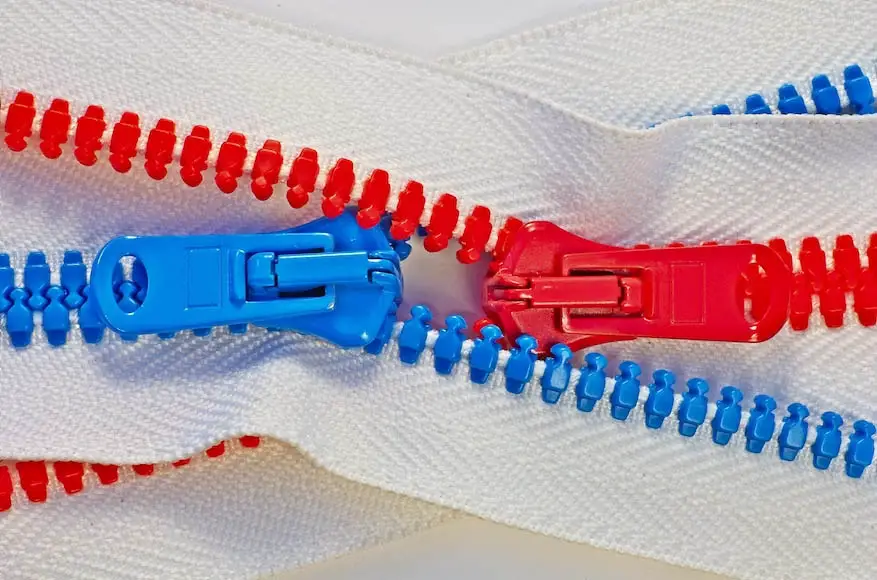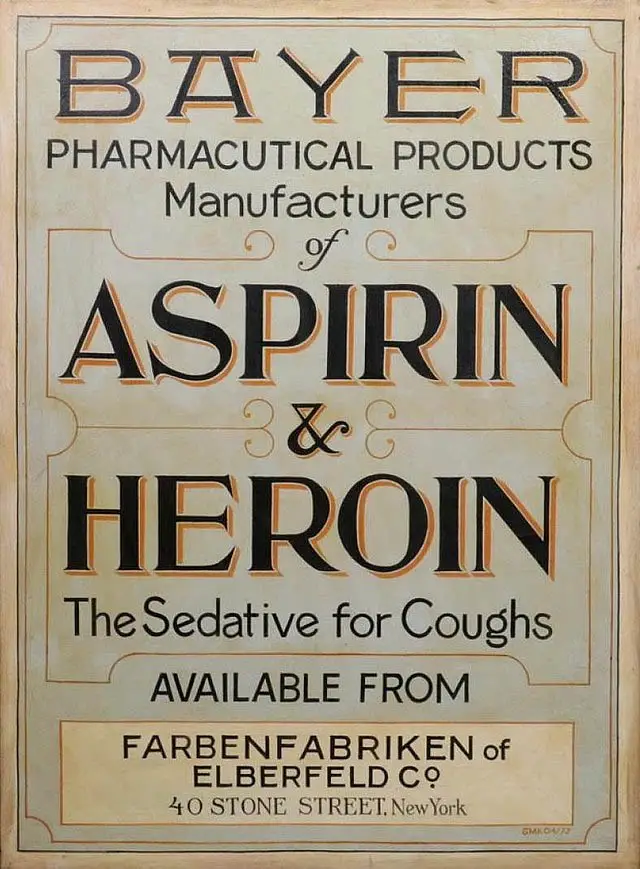Words like escalator, videotape, zipper, tabloid, and many others are examples of proprietary eponyms, as they all began as trademarked brand names.
Last weekend, some friends and I had a discussion about brand names that became used as the generic term to describe a product. You know, Kleenex, Xerox, and Frisbee rather than tissues, copiers, and novelty flying discs. No one could remember the term for that. So we moved on.
About five days later, I remembered to look it up and realized why no one remembered — I’m fairly sure none of us knew it to begin with. There are two terms: Genericized trademark or proprietary eponym. Both roll right off the tongue.
I’m a wordplay guy. Always have been. It’s the 27th most nerdy thing about me, sandwiched between discussing kickball strategy and the ability to perfectly karaoke any song released from 1991 through 1993.
There was never a chance I was going to go hunting for an obscure wordplay term and not emerge with my satchel bursting with brain rattling examples. I’m far too legit to quit for that.
Many of the brands below eventually lost their trademarks because their product names became genericized. That’s the risk, and the reason Xerox still spends a fortune on legal fees to protect their name.
11 proprietary eponyms we didn’t realize were brands
Here are 11 words you never knew were proprietary eponyms — and not just because proprietary eponym wasn’t in your go-to lexicon.
1 | Ping pong (table tennis)
This is a rare case where the real term sounds better to me than the proprietary eponym. “Ping pong” always sounded so puerile to me. I guess this is one reason why the U.S. didn’t win any gold medal for table tennis in the history of Olympics. The word itself lacks self-esteem.
Parker Brothers ended up with the trademark on the term ping pong and kept the monopoly on it — HI-YO! — until it went generic.
2 | Escalator (moving staircase)
Charles Seeberger invented the escalator in 1897 and named it by combining the Latin word for steps (scala) and elevator. In other words, this proprietary eponym is a portmanteau. That’s wordplay having sex with wordplay and producing a blue-blooded (and hopefully non-deformed) wordplay baby.
Anyway, he sold the patent rights to the Otis Elevator Company. However, “Escalator” became simply “escalator” in 1950 when the U.S. Patent Office ruled it had become the generic term for moving stairs.

3 | Laundromat (self-service coin-operated laundry)
Do you know how this term became a proprietary eponym? Well, hold on to your socks because we’re diving into the dirty laundry of its origin story.
Westinghouse Electric Corporation created the word Laundromat in the 1950s to describe the businesses that housed their coin-op washing machines.
Over time, the term became so widely recognized and associated with self-service coin-operated laundry that it transcended its original brand and turned into a proprietary eponym. It went from being a Westinghouse creation to a generic term for any self-service laundry facility AND as places for ruffians to take naps and steal pants.
4 | Tabloid (compressed medicine)
This is a really interesting evolution. Burroughs Wellcome & Co. created the word “tabloid” in 1884 for their line of easy-to-swallow pills. They aggressively protected the trademark on the word “tabloid.”
It didn’t quite work… and, eventually, people used tabloid to describe other things that were compressed. The tabloid newspaper was the main one.
The people at Burroughs even pursued legal action against several media companies and moguls — including Joseph Pulitzer — to try to get him to stop using “tabloid” to describe newspapers.
They failed, eventually Burroughs Wellcome & Co. went under, and now tabloid is THE term used to describe the third-least reliable form of media. (Only ahead of TV news and gossip blogs.)
5 | Videotape (video tape)
Ampex Corporation created the quadruplex videotape (and coined the one-word term “videotape”) in 1956. It revolutionized the entertainment industry — replacing film.
You may’ve heard about the videotape revolution during that scene in Boogie Nights where they talk about switching porn from film to video at the New Year’s Eve party right before William H. Macy kills himself.
6 | Zipper (hookless slide fastener)
In the 1920s, B.F. Goodrich put hookless metal slide fasteners on the side of boots. That became the key selling point for the boots. B.F. Goodrich named them Zippers because putting them on was so fast, it was like you were zipping through the boot-wearing process.
The boot line only lasted a few years, but people kept calling the fasteners “zippers.” (The YKK on zippers is also a trademark. The YKK Group in Japan created the machines to make zippers; the original zippers were made by hand. Ostensibly tiny, tiny hands.)

7 | Dumpster (mobile garbage bin)
The Dempster Brothers patented dumpsters in 1937, because, obviously, you want your name slightly bastardized and eternally associated with garbage. Of course, this “dumpster” revelation actually makes an old Simpsons joke more valid than I ever realized…
Bart: Otto-Man. You’re living in a dumpster?
Otto: Hoo, man, I wish. Dumpster brand trash bins are top of the line. This is just a Trash Co. waste disposal unit.
I always wonder how many more little things I’ve missed in the Simpsons episodes I’ve watched six dozen times.
8 | Bubble wrap (sealed air packaging)
Unlike several of the items on this list, Bubble Wrap is still a trademark of the Sealed Air Corporation. First registered in 1960, and it has been renewed several times since then.
So every time a kid (or adult) yells out, “I love popping Bubble Wrap!” it’s your duty as a good citizen to correct him. “I love popping sealed air packaging!”
9 | Phillips head screwdriver (crosshead screwdriver)
A businessman named Henry F. Phillips created the Phillips Screw Company in 1934 and created screws with a plus-shaped opening (and screwdrivers with the plus-shaped head to fit the openings). The term became one of the most famous proprietary eponyms in the hardware world.
He named them after himself; although let’s assume it wasn’t because his head was shaped like a propellor and more because he wanted to feed his ego. Hey, it worked for Enzo Ferrari, Calvin Klein, Milton Hershey, John Deere, the Zack Attack, and Antonie Bugle Boy.
10 | Heroin (morphine diacetate / Mexican Mud)
In the late 19th century, Bayer sold morphine diacetate as a form of cough medicine. They called it heroin, from the Greek “heros” — because it had a heroic effect on people.
It wasn’t declared illegal in the U.S. until 1924. Bayer lost the trademark for heroin (and for the term “aspirin,” which also could’ve made this list), in the Treaty of Versailles.

11 | Granola (baked whole grains)
A doctor named James Caleb Jackson created granula in the 1890s. John Harvey Kellogg adapted/stole the idea, called it Granola, and promoted it to keep people from eating meat and masturbating.
Yes, really. It was part of an anti-masturbation crusade together with other anaphrodisiac foods. Just remember that every time you eat granola with a side of bacon then vigorously masturbate right afterwards, you’re doing it all wrong.
Honorable mentions to these proprietary eponyms:
Here’s a list of notable proprietary eponyms that have become genericized trademarks. We even have a part 2 for this.
- Jet ski
- Hula hoop
- Kitty litter,
- Brassiere
- Mace
- Novocain
- Aspirin
- Yo-yo
- Onesie
- Dry ice